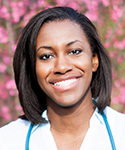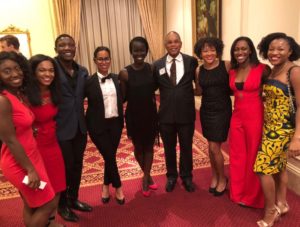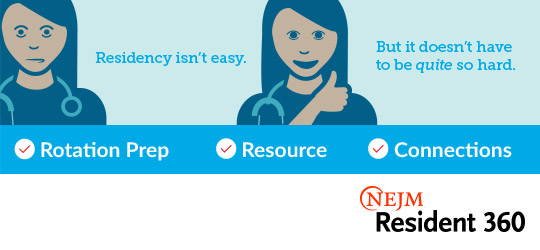October 25th, 2018
Part of the Equation, but Not Equal
Ashley McMullen, MD
Fall is finally here — the weather is changing, good TV shows are back on, and, for residency programs, interview season is fast approaching. That means it is time, once again, to choose the next class of interns to take the formative next step in their careers. In this process of selecting a few from many qualified applicants, the concept of diversity is one that comes up often. Its value is especially relevant in medicine as we seek to build a workforce of providers that is, at least partially, representative of an increasingly diverse patient population. However, while we recruit more trainees who are underrepresented in medicine (URM), it begs the question – “What are residency programs doing to both assess and address the environments in which their URM physicians practice?”
The results of a survey that went out to residents at my own institution found that, among the demeaning interactions encountered either directly or indirectly in the workplace, the vast majority originated from patients or their families. It comes as no surprise that the intense divisions playing out across our TV screens and social media do not cease to exist inside the hospital walls. Indeed, several recent mainstream and peer-reviewed publications have documented instances of overt discrimination leveled at physicians. Likewise, in a 2016 New England Journal of Medicine perspective, Paul-Emile et al. cite a particularly egregious incident that took place at one of our hospitals (N Engl J Med 2016; 374:708). Here, they outline an approach to dealing with racist patients. However, more often, the subtle instances of perceived bias present the biggest challenges.
One evening on a particularly arduous shift in the emergency department, I was readying myself to deliver bad news to a patient’s family. The medical student rotating with us that night asked me if he could come observe the conversation as a learning opportunity; I replied, “of course.” To be sure, delivering bad news is never easy, but I felt I’d had enough experience at that point in my training to confidently model this skill. Upon entering the waiting area, several of the patient’s family members were sitting patiently with silent apprehension. Anticipating the challenging news to come, they wanted to wait for one more relative to arrive before starting the conversation. When this person walked into the room, she moved with authority and purpose — clearly, she was the spokesperson for the family. I stood up to greet her, and although we made eye contact, she continued moving right past me and up to my tall, white, youthful-appearing, male medical student. “You must be the doctor,” she said.
This story is not unique among those who are underrepresented in medicine, but I can tell you how it uniquely affected me. In that moment, when I needed to evoke empathy and compassion for this family, I found myself trying to sit taller and to speak louder and with more confidence. I was trying to increase my psychological size as way of compensating for the fact that I couldn’t be the doctor this family expected or wanted at this difficult time. I often find myself going to meet a new patient and wondering how they will react when they see me — will they be pleasantly surprised, disappointed, angry, or indifferent? Regardless, I know that whether the patient is wearing a red MAGA hat or a red Colin Kaepernick jersey I must afford them the same level of care and professionalism. It is yet another example of how the rigors of medical training are compounded by the realities of our current sociopolitical climate.
As long as physician burnout continues to be on the forefront of conversation, we must also address the additive impact that these types experiences have on URM trainees and attendings. Many institutions do well to incorporate talks on implicit bias, diversity training, and cultural competency in the workplace. However, we should be allocating equal time and resources to surveying the institutional climate, discussing concrete policies around dealing with discrimination, and building a supportive community around those most often on the receiving end of biases, both implicit and overt.
In a recent meeting with a mentee who is applying to medical school, we discussed this topic over coffee. She reminded me of the lyrics from Janelle Monáe’s song, Queen, in which she states, “Add us to equations, but they’ll never make us equal.” It is true — although we’ve made impressive strides in adding more URM physicians to the equation, we’ve got a ways to go in terms of making those physicians equal.







Dear Dr. McMullen,
Thank you for your courage and belief in yourself in becoming a doctor and for holding that space so that more and more people recognize that doctors look like everybody. I am a white woman with several incredible African-American female physicians. They are brilliant, powerful, compassionate women and I am so blessed to benefit from their care. I wonder where I and many other of their patients would be if we did not have these gifted clinicians fighting for us. What you are saying is so important.
I ( Caucasian) was complaining to a fellow resident ( African American) that hospital patients often assumed I was their nurse, so the beginning of an interaction was wasted redirecting their queries.
She replied that patients often assumed that she was part of the cleaning/housekeeping staff, or berated her for arriving late for a private hairdressing session.
Nursing, housekeeping, and hairdressing are honorable professions–the weight of the interaction occurred because these patients assumed that ,despite dress and other clues,we couldn’t possibly be MDs.
it was a little thing for me, and it’s disappeared as more women entered medical school. Her load was much heavier, and I wonder how much it abated over time.
I recently attended the 50th year reunion of my medical class. Out of the original class of 196 there were only about a dozen women. The latest class size is 169 and about 40% are women. In addition a much larger portion are going into Family Practice. In my class only five chose FP residencies. There was only one female on the active staff of fifty doctors at the hospital where I trained and there were no female residents. My medical school didn’t have an FP residency program until ten years later. When I visited the town where I served my residency the old hospital had disappeared and the whole area had become a regional medical center. It’s amazing how things have changed and also amazing that there are persons whose attitudes towards women in medicine have remained stuck in the past.